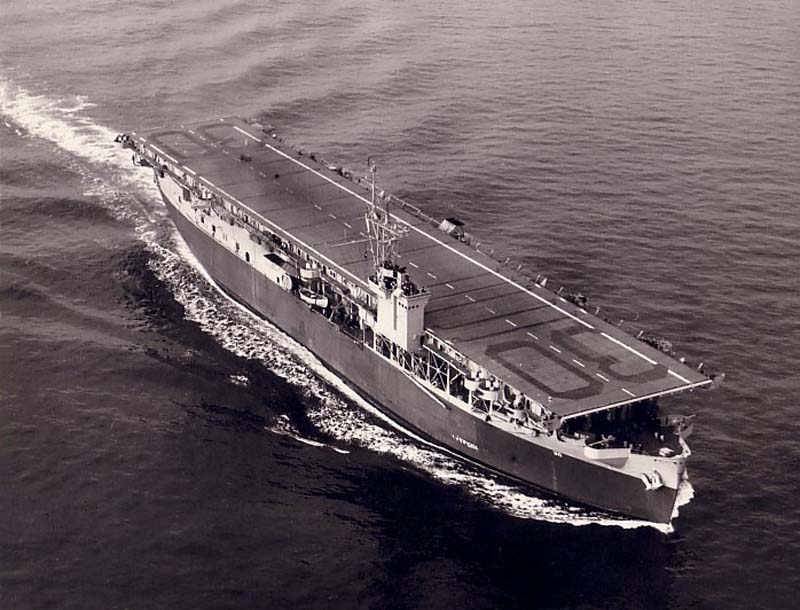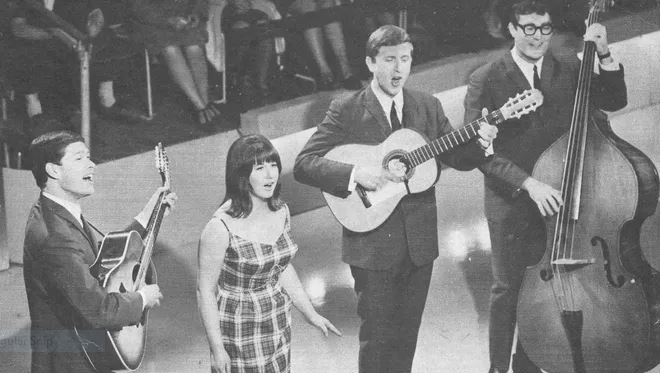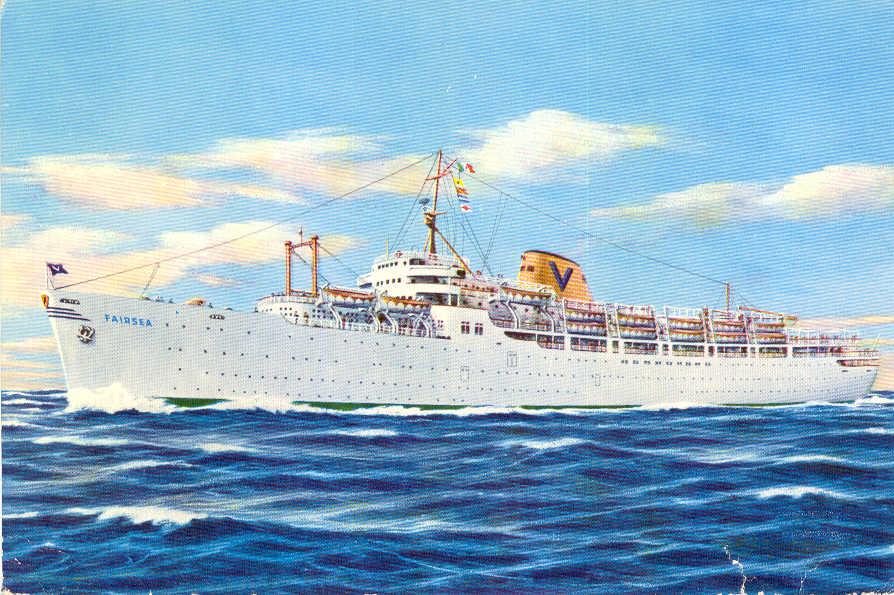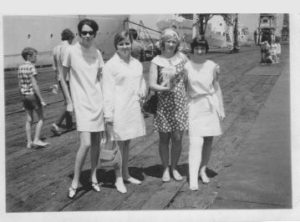- Author
- A.N. Other
- Subjects
- Ship histories and stories
- Tags
-
- RAN Ships
- None noted.
- Publication
- September 2022 edition of the Naval Historical Review (all rights reserved)
A recently joined member of our Society, Kristiane Molloy, has provided an interesting story of her first voyage as a twenty-one-year-old nurse in 1969. She was a passenger aboard the MV Fairsea bound for excitement in Europe. This is her story of that remarkable voyage which could have ended in disaster.
The Sitmar Line
Societa Italiana Transporti Marittima or the Sitmar Line was formed in the 1930s by the Russian émigré Alexandre Vlasov. In honour of its founder his ships carried a blue ‘V’ on a yellow funnel. The company started with two small cargo ships which were lost during WWII. Post-war, Vlasov restarted the business and slowly assembled a fleet of refurbished cargo and passenger ships.
The Second World War resulted in a crisis with millions of displaced persons. This led to the formation of the International Refugee Organisation (IRO) which helped them to find new homes. Gaining contracts with the IRO, Sitmar became a major shipping company taking refugees from Europe to Australasia. Under the terms of their contract they were not allowed to ply for trade so the ships returned empty.
In 1955 Sitmar became the first non-British company to win a contract to carry British migrants which resulted in an upgrade of their ships with improved standards of accommodation. While this reduced their carrying capacity they were allowed to return with regular fare-paying passengers. In between voyages they later branched out into holiday travel with short cruises to the Pacific islands.
In 1970 Sitmar lost the lucrative IRO contact to the Greek owned Chandris Line but by this time the majority of migrants were being transported by air. In 1988 the Sitmar business was purchased by the P&O Group and its ships absorbed into the new organisation.
The Sitmar fleet brought hundreds of thousands of post-war migrants from Europe to our shores using the well-known ships Fairstar, Fairsky, Fairsea and Castel Felice (Happy Castle). These were all pre-loved and well-used ships that had interesting earlier careers with considerable military pedigree. Fairstar, the youngest of the group, entered service in 1957; previously she was Bibby Lines troopship Oxfordshire, the last British purpose-built troopship. Fairsky was the escort aircraft carrier USS Barnes and later HMS Attacker. Fairsea was another auxiliary aircraft carrier first commissioned as HMS Charger and then as USS Charger. The oldest of this quartet, Castel Felice, was the first vessel owned by Sitmar Line to have been built as a passenger ship, starting life in the 1930s as British India’s passenger liner Kenya, which also saw wartime service as the infantry landing ship HMS Keren.
Three of these vessels were steamships but unusually Fairsea, which had been built in the United States, was fitted with Doxford diesel engines. In later years, with spares diminishing the maintenance of Fairsea’s engines was causing concern.
Doxford was a well-respected engine manufacturer from the northeast of England with their engines also manufactured overseas by a number of licensees. The American Sun Shipbuilding Corporation built Doxford variant 6-cylinder engines with a 21-inch bore and 60-inch (533 x 1,524 mm) combined stroke with a normal rating of 3310 kW at 180 rpm, but were capable of 25% overload to deliver 4140 kW at 195 rpm. These were fitted in Fairsea.

Consideration should also be given to the configuration changes and increased demands placed upon the engineering capacity of this ship. As built she was 11,678 gross tons, but later design changes brought this up to 13,432 gross tons, an increase of 15%, asking a lot of her original engines.
Celebrities and Prime Ministers
Surprisingly few of the many passengers carried by these vessels rated celebrity status, but we are reminded of the Gibbs family who left England as ‘Ten Pound Poms’ aboard Fairsea, setting up home in Brisbane in August 1958. They returned to their homeland in January 1967 in Fairsky, with their three sons finding success as the ‘Bee Gees’.
In 1964 the locally well-known popular folk group ‘The Seekers’ was engaged by Sitmar as on-board entertainers in Fairsky and they travelled to England. Here they were offered work in British television, with fame and fortune to follow.
The popular television Logie awards were first made in 1959 and are still going to this day. In 1967, when hosted by the famous TV star Bert Newton, they were made from Fairstar when alongside in Melbourne. During her long life Fairstar introduced many thousands of Australians to cruising, earning the well-deserved name of ‘the fun-ship’.
Recent political fortunes have brought another story to light as we find that in 1962 Maryanne Ellery sailed from Sydney aboard Fairsky where she met a handsome Italian steward, Carlo Albanese. Their relationship resulted in the birth of Anthony Albanese, now better known as the 31st Prime Minister of the Commonwealth of Australia.
The Fairsky was also favoured by another couple who left Southampton under the Assisted Migration Scheme on 7 February 1966. They were John and Moira Gillard with their daughters Alison and Julia. Julia famously became our first female Prime Minister.

MV Fairsea
In 1939 the American shipping company Moore-McCormick ordered four passenger cargo ships for its South American service. They were the first American passenger vessels fitted with diesel engines, in this case two 6-cylinder Doxford diesels geared to a single shaft. Launched in March 1941, the Rio de la Plata was requisitioned by the US Government and completed as an escort carrier. Under a Lend-Lease agreement she was commissioned in March 1942 as HMS Charger but for some reason later that year was returned to the Americans and saw considerable service in the Pacific as USS Charger.

Post-war she was returned to her owners and with the flight deck removed was converted into a troopship. But this enterprise did not last long and she was laid up and offered for sale. Alexandre Vlasov bought the vessel and had her refitted in Genoa with austere dormitory style accommodation for 1900 passengers, with men in one section and women in another. Now known as Fairsea, she departed Naples on 11 May 1949 carrying 1896 displaced persons who disembarked in Melbourne on 9 June. Many migrants who had escaped from Russian dominated areas were now ‘stateless’.
On one 1951 voyage, where a number of stowaways were discovered, a record number of 1902 passengers disembarked in Melbourne. And so started an amazing journey where Italian seafarers treated their guests with courtesy, provided good food and with deck games, concerts and dancing provided a safe and happy experience for those who had lost almost everything in war-torn Europe. Fairsea in particular was a regular sight in Australian waters, making a total of 81 voyages to and from Australia between 1949 and 1969.
The Fateful Final Voyage
With the Suez Crisis and closure of the canal the normal pattern of migrant voyages from Europe to Australia was interrupted with longer sailing being made via South Africa. Sitmar Voyage No. 101 was undertaken by Fairsea which departed Southampton in November 1968. With an unpropitious start and not long into the voyage engine problems occurred with
the ship drifting in the Bay of Biscay for five hours until repairs were made. They then proceeded via the Canary Islands for bunkers, and then to South African ports, making landfall at Fremantle on Christmas Day 1968, continuing to Adelaide, Melbourne, Sydney and finally Brisbane from where she would commence her return journey.
On this final fateful voyage there was an unexpected bonus to the ship’s entertainment when the Melbourne Symphony Orchestra came aboard under the baton of Leonard Dommett on their way to a European concert tour. Next came Sydney but instead of the finger wharves usually allocated to migrant ships, Fairsea was relegated to the commercial wharves at Woolloomooloo Bay (now part of the Fleet Base). With a lack of facilities boarding was difficult, passengers having to negotiate numerous steep ladders to find their way on board.
Finally, in Brisbane, on 5 January an excited recently qualified nurse, 21-year-old Kristiane Garlipp, was one of 254 Queenslanders saying farewell to family and friends as they joined the ship on the journey of a lifetime. The intended future itinerary was Auckland, Tahiti, Panama, Curaçao for bunkers, Lisbon and Southampton.
The Sitmar Line was not unknown to Kristiane. As a seven-year-old she had accompanied her parents and brother as refugees from Germany aboard the Castel Felice which departed from Trieste and arrived in Melbourne on 24 March 1955. They were initially transported to the Bonegilla Migrant Reception Centre in northern Victoria, a former WWII Army camp near Wodonga. They were later moved to other ex-Army camps then to migrant facilities at Singleton and Wacol near Brisbane. The Garlipp family eventually settled in Brisbane.
Fairsea then set out on a routine voyage to England via Panama with 986 passengers and 238 crew. She was due to call at Auckland, but for some reason – possibly lack of passengers – this call was missed and they proceeded to Tahiti and then made for Panama. On 23 January, when off the Galapagos Islands and 900 nm west of Panama, in one of a ship’s worst nightmares, a large fire broke out in the engine room.
With the engines stopped and the ship drifting, the alarm for Emergency Stations was not sounded and neither was the intercommunication system used. Instead, passengers were advised verbally by the crew to go to their cabins and grab lifejackets, warm clothing and their passports and then muster at their lifeboat stations. The crew readied the lifeboats for launching.
Although there was no panic, smoke poured out of the engine room and paint peeled off the funnel. But thankfully after about four hours the engine room crew brought the fire under control. The ship was now dead in the water with no propulsion or power for lighting or air conditioning. With a large amount of water used in containing the fire the engine room was flooded and the ship had taken on a list.
Passengers were advised it was unsafe to go below to their cabins and to remain and sleep on the upper decks. With limited toilet facilities and emergency rations life took on a grim new reality. A planned Crossing of the Line ceremony was cancelled but the prepared food came in handy, as for the next two days the rations were just sandwiches with a limited supply of drinks. Fresh water was rationed with supplies limited to 5 am to 8 am and 5 pm to 9 pm. To help relieve spirits, the Melbourne Symphony Orchestra played a concert of well-known melodies every afternoon.
Distress messages were answered with the Shaw Savill liner Athenic reaching the stricken ship on 25 January. She stood by, waiting until R Pace, an American ocean-going tug which had been dispatched from Panama, arrived two days later.
When the tug arrived she had insufficient fuel for the return passage, so the first task was to refuel from Fairsea. Not an easy evolution for merchant ships unused to refuelling at sea, and made all the more difficult by the liner’s loss of power. However, this was safely accomplished and the tug secured a towing hawser to the stricken ship and began the lengthy task of towing her to Panama. With everything apparently under control, Athenic departed the scene.
Captain Ciro Cardia was of rather a shy disposition but he made himself available to passengers and crew and was popular. He was married, with a young wife and a four-year-old daughter, with both remaining in Italy. On 27 January Captain Cardia made a morale boosting speech to his passengers and crew when he sounded quite cheerful.
But it was not long before the tug R Pace broke down. The oil received from Fairsea was of a different grade to that used by the tug, and with this incompatibility the engineers were unable to restart the tug’s engines. Accordingly, another line was passed and the tug now made herself fast to the liner’s stern. With another distress call sent on 29 January the American freighter SS Louise Lykes which was on charter to the Military Sea Transportation Service for operations in Vietnam took both vessels in tow and making a respectable 7 knots began the long journey to Panama.
The Fairsea’s 44-year-old captain, Ciro Cardia, was suffering the loneliness of command and with all these problems building up it caused so much stress that he took his own life. He was found dead in his cabin with a revolver by his side. A ‘Goodbye’ note to his family was found but it did not explain Captain Cardia’s motive. Passengers were only informed that the captain was ill, with Staff Captain Santo Dagnino assuming command.
The forlorn little flotilla of three ships eventually arrived at Balboa on 3 February 1969. Directors from the shipping company met the ship on arrival and explained the situation to passengers, especially the tragic suicide of Captain Cardia. Other than this tragedy there were no other injuries to passengers or crew. In keeping with the original itinerary passengers were offered charter flights to either London or Lisbon. An alternative ship could not be made available for about a month and as the company was already facing a bill for $350,000 in charter flights, they would not provide hotel accommodation during this period.
Following an inspection, it was found that repairs were uneconomical as engine parts were no longer available and would have to be specially manufactured. An Italian oceangoing tug Vortice arrived on the scene and on 9 July took Fairsea under tow through the Canal and across the Atlantic to shipbreakers at La Spezia in Italy where she arrived on 6 August 1969. This was not quite the end of our story as the name Fairsea continued when the ex-Cunard liner Carinthia became Fairsea (II). She was later taken over by P&O, becoming Fair Princess.
What happened to Kristiane?

After gaining experience in a new Berlin hospital and making some savings it was time to explore Europe. So with some new found friends they invested in a VW kombi van and took off with no great plan other than to find new places and have fun. This lifestyle naturally had to end and in 1972 Kristiane returned to Brisbane, this time by air, to be bridesmaid at her brother’s wedding.
A return to nursing in suburban Brisbane seemed dull after the high life so Kristiane struck out once again, this time for Sydney where she gained employment with a pharmaceutical company. In Sydney she met a charming young lawyer Derek Molloy and they married in 1975. Long-term residents of St Ives, they have two sons and two granddaughters. She now has time to occasionally dream of the adventures of 1969.
References:
AAP-Reuters, Fairsea – Suicide by Captain. Reported in the Canberra Times, 4 February 1969.
Jackie Leishman, Melbourne-based journalist and passenger aboard Fairsea in 1969, whose reports feature in a number of Australian newspapers.
Plowman, Peter, The Sitmar Liners Past & Present, Rosenberg, Sydney, 2004.
Trenoweth, Samantha, A Labor of Love, Australian Women’s Weekly, March 2022.




